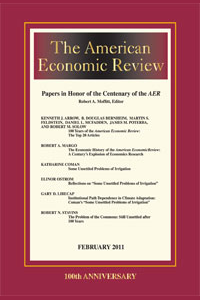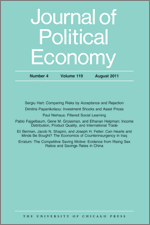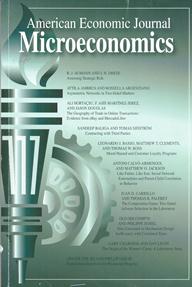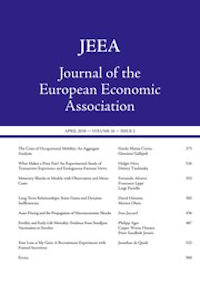
Carvalho, V. M. and Grassi, B.
Large Firm Dynamics and the Business Cycle
American Economic Review
Vol. 109 no. 4 pp. 1375-1425 (2019)
Abstract: Do large firm dynamics drive the business cycle? We answer this question by developing a quantitative theory of aggregate fluctuations caused by firm-level disturbances alone. We show that a standard heterogeneous firm dynamics setup already contains in it a theory of the business cycle, without appealing to aggregate shocks. We offer an analytical characterization of the law of motion of the aggregate state in this class of models, the firm size distribution, and show that aggregate output and productivity dynamics display: (i) persistence, (ii) volatility, and (iii) time-varying second moments. We explore the key role of moments of the firm size distribution, and, in particular, the role of large firm dynamics, in shaping aggregate fluctuations, theoretically, quantitatively, and in the data.
Keywords: Large Firm Dynamics, Firm Size Distribution, Random Growth, Aggregate Fluctuations
JEL Codes: D21, D22, D24, E32, L11
Author links: Vasco Carvalho
Publisher's Link: https://doi.org/10.1257/aer.20151317
Cambridge Working Paper in Economics Version of Paper: Efficiency and equilibrium in network games: An experiment, Gallo, E. and Yan, C., (2015)
Cambridge Working Paper in Economics Version of Paper: Large Firm Dynamics and the Business Cycle, Carvalho, V. M. and Grassi, B., (2015)



